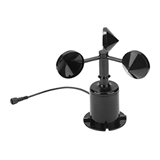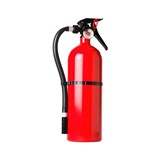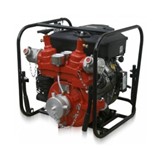Firstly, when I look out my office window in Sydney, I can see the Sydney Opera House, designed by the famous Danish architect Jorn Utzon. We all know what an important icon it is for Australia and how much it has done for Sydney and Australia. The Sydney Opera House is truly a global architectural icon.
Secondly, when I walk just a few metres north of my office I can head up to Observatory Hill, and there in prime position is a bust of the famous Danish children’s storyteller Hans Christian Anderson. Observatory Hill was originally a fort and was set up to watch for a possible Russian invasion in the early part of the twentieth century, but the Russians never came and now we have Hans planted there this prime piece of Sydney real estate instead. In fact, I often thought that in return, perhaps Australia should give the City of Copenhagen, a bust of one of our greatest storytellers Henry Lawson, perhaps somewhere near The Little Mermaid? But I am not sure how the bust would be received especially given that Henry Lawson was originally Henry Larsen – and (dare I say it) Norwegian!
Thirdly, when I walk just a few metres the other way, and go south of my office, I end up at a salubrious establishment called “The Slip Inn”. Of course, in Sydney, we all know why the Slip Inn is famous. It’s because this is where, so legend goes, a young Hobart real estate agent called Mary Donaldson, experiencing the famous ‘Man Drought’ (a phrase coined by eminent Australian demographer Bernard Salt) in Sydney that many young professional women face in Sydney, allegedly slipped in for a drink, allegedly hoping to snare an eligible bachelor merchant banker, lawyer or if things got desperate, an economist, but ended up meeting a bloke called Fred, who happened to be the Crown Prince of Denmark.
Yes, it may have sounded like a good pick-up line at the time, but he was indeed a Prince, and no matter how many times Mary kissed him he did not turn into a frog. And the rest is history. There was the royal wedding, which at Australia’s Trade Commissioner to Denmark, Flemming Larsen turned it into an amazing media opportunity for getting more Australian exports into Denmark, the royal births, the royal visits back to Australia and so on.
Despite some ambivalence towards the British monarch in Australia, our own Tasmanian born future Queen of Denmark is immensely popular. In fact, when I was the Beijing Olympics this year, at the Australian Olympic team function, almost every young female Australian athlete – all these young women who have won gold medals in swimming and been big stars in basketball, hockey, water polo and the like, all wanted their picture taken with Princess Mary. As the old saying goes, “there’s something about Mary.”
But we can now look beyond the Sydney Opera House, Hans Christian Anderson and Princess Mary to see new areas of Danish influence in Australia in the area of climate change. In Copenhagen, the airport economist was invited to attend a new Danish innovation called ‘the Energy camp’.
The Energy Camp is not an ordinary conference or summit but it is ‘camp’ in the sense that all the leading experts and industry players in Denmark were locked up in a hotel for 36 hours (fortunately not a tent) and forced to come up with some practical initiatives for energy efficiency in Denmark. The ‘campers’ then presented their ideas to Connie Hedegaard, the energetic Minister for Climate and Energy (Denmark’s equivalent of Penny Wong).
The Energy Camp has received a lot of attention in Denmark as Copenhagen is hosting the major United Nations Conference on Climate Change in December 2009, (known colloquially as ‘COP15’). COP15 is likely to be the successor to Kyoto and as a result, there’s a plethora of industry associations, think tanks and NGOs in Copenhagen that have been set up to influence the outcome.
In just under two days, I interviewed representatives from various think-tanks including The Climate Consortium Denmark, The Copenhagen Climate Council, Monday Morning, and the uniquely named Copenmind (which brings universities together with business to make environmental solutions commercially viable). The trade unions through the United Federation of Danish Workers (‘3F’) and the employers, represented by the Confederation of Danish Industries (‘DI’) are also major players in the climate change debate and have experts on their staff devoted solely to climate change and energy efficiency issues.
In fact, there’s no shortage of experts in Denmark on the topics of climate change and energy efficiency issues. Denmark’s expertise on environmental issues extends well beyond the traditional green groups and also includes sceptics like Bjorn Lomborg, author of ‘The Skeptical Environmentalist’ and ‘Cool it’ who is perhaps one of Denmark’s most famous exports on the issue. The quantity of opinionated Danes on the issue of climate change led one camper, Jens Bo Holm-Nielsen, a Professor of Bioenergy and Green Engineering at Aalborg University in Esbjerg to quip: “We have so many experts on climate change in Denmark; we have to feed the extra ones to the pigs.”
In addition to Denmark, the rest of Scandinavia is in on the act when it comes to energy efficiency. For example in Norway, the government agency, Innovation Norway has invested heavily in environmental and renewable energy. It is an interesting place, Norway. In many ways, thanks to oil and gas reserves, Norway is richer than many oil sheikdoms, but they save it all for a rainy day through their equivalent of the future fund and spend a lot of proceeds on social programmes, education and healthcare.
They are not much into conspicuous consumption either. Whilst the airport economist was in Oslo, CNN was beaming through pictures from Dubai of the opening of a new hotel there with a star-studded celebrity cast lead by Australia’s own Kylie Minogue that allegedly cost $35 million. You couldn’t imagine that happening in Norway. However, they are also quite competitive in a nice Scandinavian way. For example, when I asked one Norwegian journalist, Geir Salversen of Oslo’s main newspaper, Aftenpostnen, about the financial ‘meltdown’ in neighbouring Iceland, he observed: “They used to talk about an economic ‘miracle’ in Iceland. But all they do fish and cut each other’s hair. And they borrowed ten times their GDP – no wonder they’re in trouble!”
But what about Australia’s role in COP 15 and climate change more generally in Scandinavia? What role are we playing?
First of all, Australia was the only foreign nation to send a delegation to the Energy Camp. Ian Walker of Department of Climate Change was there along with the CSIRO’s Jim Smithin, and Stephen Kim a Korean-born entrepreneur from Melbourne-based Semitech Innovations. Professor Jack Singh, a Professor of Microtechnology from La Trobe University also briefed that camp about his energy breakthroughs in Australia.
Secondly, Australian expertise is ever-present in the think-tank and NGO arena in Denmark. Both Professor Tim Flannery (former Australian of the year) and Nick Rowley (former environmental policy adviser to Bob Carr and Tony Blair) are key players at Copenhagen Climate Council and four universities – Murdoch, La Trobe, UNSW and Adelaide – are involved in Copenmind.
Thirdly, the Danes anticipate that the Australian Government will play a big role at COP 15 as the early signing of Kyoto Protocol, on the election of the Rudd Government seems to have made some impact in Copenhagen. As Connie Hedegaard said: “We expect Australia to be an important bridge to both the USA and to the developing world – especially China. Australia’s close links to China and your Prime Minister’s language skills and understanding of Beijing will be very important to the forging of the global agreement we hope to reach at COP 15.”
So now we have the Energy camp concept to add to the gifts that the Danes have given Australia in addition to the Sydney Opera House, Hans Christian Anderson and a stake in the Danish Royal family. But at least on the architecture and sculpture front, Australia is returning the favour next year.
The Opera House may be one of the world’s great man-made sculptures, but Australia is now giving a bit back with the’ Sculptures by the sea’ exhibition which was made famous at Tamarama in Sydney’s eastern beaches being exported to Aarhus in June 2009. In fact, there is a royal element to it too as according to Austrade Copenhagen’s Thomas Andersen, Princess Mary and Crown Prince Frederik have been the drivers behind the project.
So watch out for ‘Sculptures by the sea’ in Aarhus in June and then an influential Australian presence in Copenhagen at COP 15 in December. The year 2009 is shaping up to be a big year for Denmark and Australia and the future of the whole planet.
- Suppliers
- New to IndustrySearch? Book a Demo
- Advertise with us
- Login
- Email Marketing
- Buyers
- Get Quotes
- Articles & Ideas
- Login
- Subscribe to newsletter
- My Details
- Get Quotes
- Automation & Control
- Automotive Workshop Equipment
- Commercial Cleaning Equipment & Supplies
- Construction Equipment & Heavy Machinery
- Conveyor Systems & Components
- Electrical & Power Generation Equipment
- Electronic Components
- Farming & Agriculture
- Food & Beverage Processing
- Forklifts & Forklift Attachments
- Hydraulic & Pneumatic Equipment
- Industrial Materials, Tools & Components
- Industrial Pumps
- IT Hardware & Industrial Computing
- IT Software & Applications
- Laboratory Equipment & Instruments
- Manufacturing & Industrial Equipment
- Material Handling & Lifting Equipment
- Metalworking & Machining
- Mining Equipment & Machinery
- Packaging & Labelling Machinery
- Pallet Handling Equipment
- Personal Protective Equipment
- Security & Surveillance
- Test & Measurement
- Transport & Logistic Equipment
- Warehouse Storage, Shelving & Racking
- Waste Treatment & Environmental Management
- Welding Machines & Accessories
- Woodworking & Joinery Machines
- Workplace Equipment
- Workplace Safety Equipment
- Get Quotes
- Automation & Control
- Automotive Workshop Equipment
- Commercial Cleaning Equipment & Supplies
- Construction Equipment & Heavy Machinery
- Conveyor Systems & Components
- Electrical & Power Generation Equipment
- Electronic Components
- Farming & Agriculture
- Food & Beverage Processing
- Forklifts & Forklift Attachments
- Hydraulic & Pneumatic Equipment
- Industrial Materials, Tools & Components
- Industrial Pumps
- IT Hardware & Industrial Computing
- IT Software & Applications
- Laboratory Equipment & Instruments
- Manufacturing & Industrial Equipment
- Material Handling & Lifting Equipment
- Metalworking & Machining
- Mining Equipment & Machinery
- Packaging & Labelling Machinery
- Pallet Handling Equipment
- Personal Protective Equipment
- Security & Surveillance
- Test & Measurement
- Transport & Logistic Equipment
- Warehouse Storage, Shelving & Racking
- Waste Treatment & Environmental Management
- Welding Machines & Accessories
- Woodworking & Joinery Machines
- Workplace Equipment
- Workplace Safety Equipment
Trusted by 1,000,000+ Australian industrial buyers
Buyers
- Discover products & solutions
- Login
- Subscribe To Newsletter
- Browse All Products
- Read Articles
Suppliers
Advertise
- Promote your products & solutions
- New to IndustrySearch? Book a Demo
- Login / Forgot Password
- Advertise Your Products
- Success Stories
- Email Marketing
- Suppliers
- Advertise with us
- Login
- Email Marketing
- Buyers
- Get Quotes
- Articles & Ideas
- Login
- Subscribe to newsletter
- My Details
Get Quotes
- Automation & Control
- Automotive Workshop Equipment
- Commercial Cleaning Equipment & Supplies
- Construction Equipment & Heavy Machinery
- Conveyor Systems & Components
- Electrical & Power Generation Equipment
- Electronic Components
- Farming & Agriculture
- Food & Beverage Processing
- Forklifts & Forklift Attachments
- Hydraulic & Pneumatic Equipment
- Industrial Materials, Tools & Components
- Industrial Pumps
- IT Hardware & Industrial Computing
- IT Software & Applications
- Laboratory Equipment & Instruments
- Manufacturing & Industrial Equipment
- Material Handling & Lifting Equipment
- Metalworking & Machining
- Mining Equipment & Machinery
- Packaging & Labelling Machinery
- Pallet Handling Equipment
- Personal Protective Equipment
- Security & Surveillance
- Test & Measurement
- Transport & Logistic Equipment
- Warehouse Storage, Shelving & Racking
- Waste Treatment & Environmental Management
- Welding Machines & Accessories
- Woodworking & Joinery Machines
- Workplace Equipment
- Workplace Safety Equipment
Get Quotes
- Automation & Control
- Automotive Workshop Equipment
- Commercial Cleaning Equipment & Supplies
- Construction Equipment & Heavy Machinery
- Conveyor Systems & Components
- Electrical & Power Generation Equipment
- Electronic Components
- Farming & Agriculture
- Food & Beverage Processing
- Forklifts & Forklift Attachments
- Hydraulic & Pneumatic Equipment
- Industrial Materials, Tools & Components
- Industrial Pumps
- IT Hardware & Industrial Computing
- IT Software & Applications
- Laboratory Equipment & Instruments
- Manufacturing & Industrial Equipment
- Material Handling & Lifting Equipment
- Metalworking & Machining
- Mining Equipment & Machinery
- Packaging & Labelling Machinery
- Pallet Handling Equipment
- Personal Protective Equipment
- Security & Surveillance
- Test & Measurement
- Transport & Logistic Equipment
- Warehouse Storage, Shelving & Racking
- Waste Treatment & Environmental Management
- Welding Machines & Accessories
- Woodworking & Joinery Machines
- Workplace Equipment
- Workplace Safety Equipment
Trusted by 1,000,000+ Australian industrial buyers













